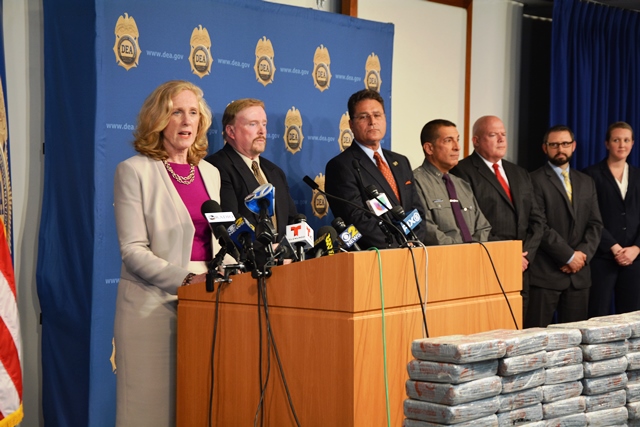A heroin epidemic is sweeping across the U.S., including New York City, and it does not discriminate. It strikes the ghettos and the suburbs and its enabler may be pain medication. According to a July report by the Center for Disease Control and Prevention, individuals addicted to opioids are 40 times more likely to be addicted to heroin as well. In May, the Special Narcotics Prosecutor for New York City, Bridget G. Brennan, with the help of the federal Drug Enforcement Administration, seized 150 pounds of heroin, the largest heroin bust in New York’s history. The Brooklyn Ink’s Sneha Antony spoke with Brennan recently to discuss the epidemic that is damaging and destroying so many lives.

Have you noticed an increase in drug-related crimes in New York City in the past few years? Yes. What is probably most outstanding at this point is the surge in heroin use across the city. The amount of heroin that we have seized in our major cases has really skyrocketed. I believe we seized a record amount of heroin last year and we have already eclipsed that, or targeted to eclipse that, this year. Prior to the heroin surge, we were tracking an increase in the illegal sales of opioid prescription medications—medications like Oxycodone, and that sort of the thing. When did you notice this surge in heroin and illegal sales of prescription pills? We started tracking the surge in prescription pills probably back to 2009-2010. That is actually the first time we started to see the surge in heroin as well. Where is the heroin coming from? The heroin that comes in comes across the border from Mexico, primarily. Much of it is produced and refined in Colombia. And we are seeing an increased amount being refined in Mexico too now. The vast majority of the big seizures that we get come across the southwest border. And what is the source for the pills? The pills come from pharmacies. There are countless different criminal schemes involving the pills. We have seen some doctors involved where they will get paid— basically cash—in an exchange for a prescription for pills. We prosecuted one case where the head of a pharmacy in a hospital stole a quarter of a million Oxycodone pills. We’ve seen prescription rings where individuals steal or obtain stolen prescription pads and the prescriptions are written out. You also see people who will use their insurance or Medicaid or Medicare to obtain the pills and sell them on the streets. And the entire result of that is this immense supply of addictive opioid medication and addictive heroin out on the black market. What do you think needs to be done to combat this epidemic? The doctors have to be more responsible in prescribing practices. We have to tighten up on the security of the prescription pads. I think we all have to come to recognize that the prescription pads have a real value if you can turn it into $3,000 pretty easily. There are a lot of responsibilities to go around. Prevention is a big piece. Education is a big piece. Reducing the supply of drugs is absolutely critical, and that is where law enforcement comes into play. What is the timeline for a drug investigation? It depends on the kind of investigation that we are doing. The big investigations will take months to years, and that is the kind of investigation that is going to yield 150 pounds of heroin or something like that. The shorter term investigations are the ones into local street organizations that may be involved in violence. Those may take a matter of months. What do you think about the future for this situation? Are you hopeful? I am hopeful. I have lived through the crack crisis in New York City and I saw that get under control. I have seen situations that felt very out of control in this city come under control. So I am very hopeful that we will find our way out of this one too. The most hopeful or optimistic elements are that we now look at the problem more holistically. Is this work satisfying? I find working on the cases very rewarding. Law enforcement has an important and effective role in reducing addiction by reducing supply of drugs.


Leave a Reply